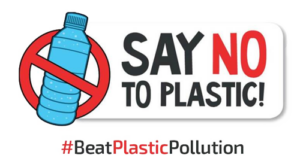Environmentalists have led us to believe that recycling plastics can solve the problem of global plastic pollution that is choking our planet. But that’s not the case…
We hear so much from the media that plastic pollution is a global problem that we may no longer understand its true gravity. There are many institutions, experts and NGOs working on this topic, but let us admit that a meaningful global solution is not even imminent. Thanks to our consumer behavior, millions of square kilometers of plastic waste islands now cover the oceans, seriously threatening their ecological balance.

From around 10 billion tons of plastic produced since the 1950s, more than 8 billion tons are now waste, these micro plastics and chemicals derived from their components are released directly and indirectly through the soil or into surface and groundwater into deeper water bases used as sources of drinking water. And what they don’t advertise: through drinking water, hazardous substances also enter the human body. Since the 80s, multinational oil and plastics giants have been communicating plastic waste recycling in order to protect our environment; despite the fact that it can be clearly shown that this is at most partially technically possible and economically unsustainable. Recycling campaigns are also increasingly profitable, but despite efforts over the past fifty years, no more than 10% of the world’s plastic waste is currently recycled. With this effectiveness, success is questionable!
Let us believe  trend outlined above does not unfortunately bode well. That production will not stop anytime soon because of the ecological disasters it causes and the social pressures associated with it. According to www.statista.com data, the world’s current plastic production exceeds 400 million tons and emissions from the chemical industry have been steadily increasing since the 70s. China accounted for 32% of global plastic production in 2022, becoming by far the world’s largest plastic producer, but India is also making huge strides in this tragic “development”. Asia accounts for 19% and North America for 17% of global plastic production. And we’re nowhere near the top according to OECD analysis of the Global Plastics Vision 2022, world plastic production is expected to triple to around 1.2 billion tons by 2060. What is the future of plastic pollution accordingly? The situation is already quite frightening, and the market trend outlined above does not unfortunately bode well.
trend outlined above does not unfortunately bode well. That production will not stop anytime soon because of the ecological disasters it causes and the social pressures associated with it. According to www.statista.com data, the world’s current plastic production exceeds 400 million tons and emissions from the chemical industry have been steadily increasing since the 70s. China accounted for 32% of global plastic production in 2022, becoming by far the world’s largest plastic producer, but India is also making huge strides in this tragic “development”. Asia accounts for 19% and North America for 17% of global plastic production. And we’re nowhere near the top according to OECD analysis of the Global Plastics Vision 2022, world plastic production is expected to triple to around 1.2 billion tons by 2060. What is the future of plastic pollution accordingly? The situation is already quite frightening, and the market trend outlined above does not unfortunately bode well.
Do not forget that we have borrowed this planet from our children only for use and it is our duty to do everything possible to keep it in good condition for future generations. Let’s work for a plastic-free world now, continue to collect waste selectively where possible, use natural materials and do not buy or use either disposable or returnable PET bottled drinking water. And, of course, we should strive to protect our own health and that of our loved ones from the harmful effects caused by chemicals and plastics, which unfortunately occur in significant quantities in nature, in addition to environmentally friendly “green” thinking. To this end, it is recommended to consume healthy drinking water produced from air vapour by the atmospheric water generator available at www.wizzwell.com AWG equipment not only provides healthy water*, but is also a reliable source of water where water supply is not available or tap water quality is poor.

